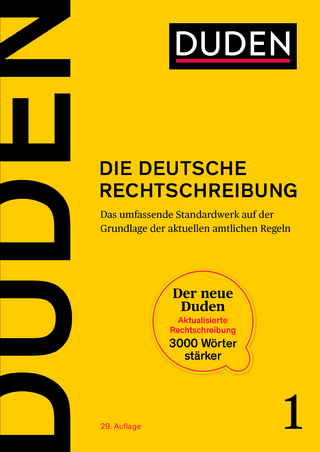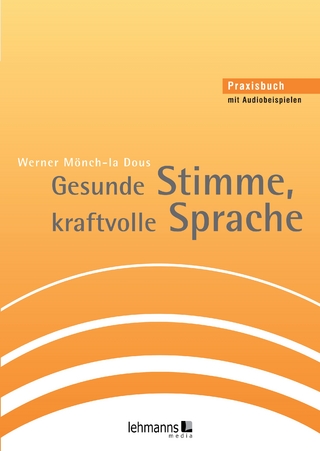
Introduction to Arabic Linguistics
Wiley-Blackwell (Verlag)
978-1-119-78756-3 (ISBN)
Introduction to Arabic Linguistics presents a clear and engaging overview of the core linguistic aspects of modern Arabic, focusing on Modern Standard Arabic and Levantine Arabic. Designed to be welcoming for undergraduates without fluency in Arabic and for students with only limited familiarity with linguistics, this textbook covers all fundamental areas of Arabic linguistics. Detailed yet accessible chapters include comprehension and analysis questions, critical thinking exercises, application examples with authentic data, reading assignments, and classroom and homework projects.
This valuable textbook is organized into three units which cover sounds and sound systems, word structure and meaning, and phrases and phrase structure. Author Youssef Haddad draws from both the Arabic grammatical tradition and recent linguistic research to provide students with a solid foundation in the linguistic features and structures of Arabic sounds, words, and phrases. Topics include phonological processes, derivational morphology, noun and verb phrases, sentence structure, structural ambiguity, and more.
Discusses key topics in the formal study of Arabic linguistics, suitable for Arabic speakers and language learners
Encourages students to investigate a dialect not covered in the book at different levels of linguistic analysis
Answers many of the most common and relevant questions in the field of Arabic linguistics
Includes a typological and historical overview of the Arabic language
Offers an instructor’s website with additional exercises, practice questions, PowerPoint presentations, and answer keys
Introduction to Arabic Linguistics is the perfect textbook for undergraduates in modern language and linguistic courses and a valuable resource for graduate students in Arabic studies or linguistics programs.
YOUSSEF A. HADDAD is a Professor of Arabic Language and Linguistics at the University of Florida. His research covers topics in syntax, pragmatics, phonology, and prosodic morphology. He is the author of two books, Control into Conjunctive Participle Clauses: The Case of Assamese and The Sociopragmatics of Attitude Datives in Levantine Arabic, and the co-editor of volumes XXVIII and XXXI of Perspectives on Arabic Linguistics.
Preface xi
Acknowledgments xiv
Abbreviations xv
Glossary xvi
About the Companion Website xxvii
1 Arabic: An Insider’s Perspective 1
1.1 My Experience with Arabic 4
1.2 My Experience with Other Languages 10
1.3 About this Book 12
Further Reading 13
PART I Arabic Sounds and Sound Systems 15
2 Speech Sounds: An Overview 17
2.1 Production of Speech Sounds 18
2.2 The International Phonetic Alphabet 21
2.3 The Arabic Writing System 23
2.4 Conclusion 27
Further Reading 27
3 Arabic Consonants and Vowels 28
3.1 Modern Standard Arabic Consonants 28
3.1.1 Place of Articulation 29
3.1.1.1 Bilabial Consonants 29
3.1.1.2 Labiodental Consonants 32
3.1.1.3 Interdental Consonants 33
3.1.1.4 Alveolar Consonants 34
3.1.1.5 Palatal Consonants 36
3.1.1.6 Velar Consonants 37
3.1.1.7 Uvular Consonants 38
3.1.1.8 Pharyngeal Consonants 39
3.1.1.9 Glottal Consonants 40
3.1.2 Voicing 41
3.1.3 Manner of Articulation 42
3.1.3.1 Oral Stops 42
3.1.3.2 Nasal Stops 45
3.1.3.3 Fricatives 45
3.1.3.4 Liquids 49
3.1.3.5 Glides 50
3.2 Modern Standard Arabic Vowels 52
3.3 Modern Standard Arabic Sounds: Putting it all Together 56
3.4 Levantine Arabic Sounds 59
3.4.1 Levantine Arabic Consonants 60
3.4.2 Levantine Arabic Vowels 62
3.4.3 Levantine Arabic Sounds: Putting it all Together 62
3.5 Conclusion 67
Further Reading 67
4 Arabic Syllable Structure and Stress 69
4.1 Syllable Structure in Modern Standard Arabic 70
4.2 Stress in Modern Standard Arabic 80
4.3 Syllable Structure and Stress in Levantine Arabic 84
4.4 Conclusion 90
Further Reading 90
5 Arabic Sound System 91
5.1 Minimal Pairs and Phonemes vs. Allophones 93
5.2 Phonological Derivation 97
5.2.1 Assimilation 97
5.2.2 Epenthesis 108
5.2.3 Syncope and Vowel Shortening 114
5.2.4 Ordering of Rules 116
5.3 Conclusion 117
Further Reading 118
PART II Arabic Words: Their Structure and Meaning 119
6 Arabic Morphology: An Overview 121
6.1 Agglutination 122
6.2 Interdigitation: Root-and-Pattern Morphology 128
6.3 Conclusion 133
Further Reading 133
7 Arabic Verbs: Form and Meaning 134
7.1 Modern Standard Arabic Verbs 134
7.2 Pattern I: C1VC2VC3 or faʕal-a/faʕil-a/faʕul-a 141
7.3 Augmented Patterns II through X 146
7.3.1 Patterns II and V: faʕʕal-a and tafaʕʕal-a 147
7.3.2 Patterns III and VI: faːʕal-a – tafaːʕal-a 150
7.3.3 Patterns IV and X: ʔafʕal-a – stafʕal-a 154
7.3.4 Patterns VII and VIII: nfaʕal-a – ftaʕal-a 158
7.3.5 Patterns I–VIII, X: Looking at Them Together! 160
7.3.6 Patterns IX: fʕall-a 163
7.3.7 Verb Patterns: A Word of Caution 164
7.4 Levantine Arabic Verbs 165
7.4.1 Verb Conjugation in Levantine Arabic 166
7.4.2 LA Pattern I Verbs 169
7.4.3 LA Pattern II 170
7.4.4 LA Pattern III 173
7.4.5 LA Pattern IV 174
7.4.6 LA Pattern V 177
7.4.7 LA Pattern VI 178
7.4.8 LA Pattern VII 180
7.4.9 LA Pattern VIII 181
7.4.10 LA Pattern X 182
7.4.11 LA Pattern IX 184
7.5 Conclusion 184
Further Reading 185
8 Arabic Nouns: Form and Meaning 186
8.1 The Modern Standard Arabic masˤdar 187
8.1.1 Pattern I Verbal Nouns 188
8.1.2 Patterns II–X Verbal Nouns 190
8.2 Modern Standard Arabic Participles 194
8.2.1 Participles Derived from Pattern I Verbs 194
8.2.2 Participles Derived from Patterns II–X Verbs 196
8.3 Other Types of Modern Standard Arabic Nouns 204
8.3.1 Nouns of Instance 204
8.3.2 Nouns of Profession 206
8.3.3 Nouns of Instrument 207
8.3.4 Nouns of Place 208
8.4 Modern Standard Arabic Adjectives 210
8.4.1 Adjective Derivation from Pattern I Verbs 210
8.4.2 Adjectives Denoting Color and Physical Traits 211
8.4.3 Relative Adjectives 212
8.4.4 Comparative and Superlative Adjectives 214
8.5 Modern Standard Arabic Nouns and Adjectives: Inflectional Categories 216
8.5.1 Modern Standard Arabic Gender 216
8.5.2 Modern Standard Arabic Number 217
8.5.2.1 Modern Standard Arabic Dual 218
8.5.2.2 Modern Standard Arabic Sound Feminine Plural 218
8.5.2.3 Modern Standard Arabic Sound Masculine Plural 221
8.5.2.4 Modern Standard Arabic Broken Plural 222
8.5.3 Modern Standard Arabic Case 226
8.5.4 Modern Standard Arabic Definiteness 228
8.6 Levantine Arabic Noun Morphology 229
8.6.1 Levantine Arabic Definiteness 230
8.6.2 Levantine Arabic Gender 230
8.6.3 Levantine Arabic Number 232
8.6.4 Levantine Arabic Case 232
8.7 Conclusion 235
Further Reading 236
9 Arabic Morphophonology 237
9.1 The Arabic Verb Root 238
9.2 Verb Roots and Morphophonology 240
9.2.1 The Morphophonology of Assimilated Roots 240
9.2.2 The Morphophonology of Hollow Roots 242
9.2.3 The Morphophonology of Defective Roots 246
9.2.4 The Morphophonology of Verbs Derived from Geminated Roots 250
9.3 Other Morphophonological Phenomena 254
9.3.1 The Morphophonology of Imperatives 255
9.3.2 Syncope and Epenthesis in Lebanese Arabic Verb Paradigms 256
9.4 Conclusion 258
Further Reading 258
PART III Arabic Phrases and Phrase Structure 259
10 Phrase Structure: An Overview 261
10.1 Categories and Phrases 262
10.2 Constituency 269
10.3 Conclusion 273
Further Reading 273
11 The Simple Sentence in Arabic 275
11.1 Verbal Sentences 275
11.2 Nominal Sentences 287
11.2.1 Verbless Nominal Sentences 287
11.2.2 Nominal Sentences with Linking Verbs 290
11.2.3 Nominal Sentences with Lexical Verbs 295
11.3 Conclusion 301
Further Reading 302
12 Arabic Noun Phrases 303
12.1 The Minimal Noun Phrase 303
12.2 Noun Phrases with Specifiers 308
12.2.1 Indefiniteness 308
12.2.2 Definiteness via l- Suffixation 310
12.2.3 Demonstratives 314
12.3 Noun Phrases with Modifiers 316
12.3.1 Noun Phrases with Adjectives 316
12.3.2 Noun Phrases with Prepositional Phrases 321
12.4 Construct Noun Phrases 323
12.4.1 The Structure of Construct Noun Phrases 324
12.4.2 Construct Noun Phrases as Single Prosodic Units 329
12.4.3 Construct Noun Phrases: Meaning Contributions 337
12.4.4 Other Uses of Construct Noun Phrases 347
12.5 Conclusion 349
Further Reading 349
13 Arabic Verb Phrases 351
13.1 Verb Phrases: Selectional Requirements 351
13.2 Tense, Aspect, and Mood 358
13.2.1 The Perfective 359
13.2.2 The Imperfective 362
13.2.2.1 The Imperfective in Modern Standard Arabic 362
13.2.2.2 The Imperfective in Levantine Arabic 371
13.3 Verb Phrases with Compounds Verbs 377
13.4 Conclusion 386
Further Reading 386
14 Before You Go 388
14.1 What Have We Accomplished? 388
14.2 Where Do We Go Now? 390
Bibliography 391
Index 397
| Erscheinungsdatum | 24.02.2023 |
|---|---|
| Verlagsort | Hoboken |
| Sprache | englisch |
| Maße | 175 x 249 mm |
| Gewicht | 862 g |
| Themenwelt | Schulbuch / Wörterbuch ► Wörterbuch / Fremdsprachen |
| Geisteswissenschaften ► Sprach- / Literaturwissenschaft ► Sprachwissenschaft | |
| Sozialwissenschaften ► Soziologie | |
| ISBN-10 | 1-119-78756-4 / 1119787564 |
| ISBN-13 | 978-1-119-78756-3 / 9781119787563 |
| Zustand | Neuware |
| Informationen gemäß Produktsicherheitsverordnung (GPSR) | |
| Haben Sie eine Frage zum Produkt? |
aus dem Bereich


